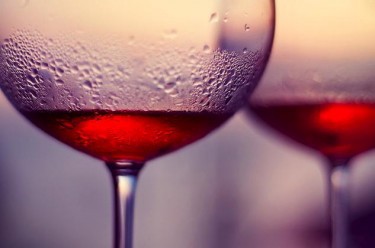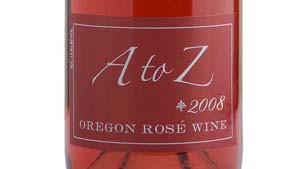The Wine Scout: Rosé State of Mind
by Merritt Olson

When I was a freshman at a small liberal arts college in wine country, I had a roommate who worked for the one and only wine bar in town. She’d come home with wads of twenties, free booze, and stories of the crazy antics locals would get up to in the bar’s after hours. To me this job sounded fabulous, and seemed like an amazing respite from the long hours of studying and milquetoast “partying” with the J.Crew-clad kids that made up the bulk of the college’s populace.
Late one night, she stumbled through our door complaining that they couldn’t find any good waitresses; the town of Walla Walla, WA, was not quite the wine destination it is today (the main source of town jobs was the state penitentiary). Understandably, the area’s young residents were divided into two groups: 1) those on probation and required to live in town, and 2) those who attended the college and had wealthy families and allowances. I definitely did not have an allowance, and I wasn’t on probation either, plus I could really use the money (and the change of pace).
So I lied and said I had waited tables in high school, cobbled together a decent (completely fake) resume, and somehow got a job at the wine bar. My wine education began the day I started waiting tables; one of the first things I learned was that everyone seemed to agree “Friends don’t let friends drink White Zinfandel.” Every other restaurant carried some version — Sutter Home or Beringer White Zin — but our sommelier refused to entertain the notion of having any at all. I remember this one time a little old lady came in and asked for a glass of White Zin, and he frowned and looked at her like she’d asked for a glass of vomit. But I wanted to make her happy so I grabbed a glass of the sweetest Riesling we carried and poured in a dash of red wine. Voila! Pink wine.
I soon discovered that other kinds of dry pink wine were actually highly praised and even trendy within the wine community. I remember a local winemaker who’d come into the wine bar on a bad and dreary day, asking for a glass of rosé. He would tell me that “rosé is a state of mind.” But still, the “all pink wine is bad wine” attitude persisted among many.
One of the saddest things about the popularity of “blush” wines is that it’s made a lot of people fearful and skeptical of any wine that’s remotely pink. And although dry rosé wines are experiencing a surge in popularity (some wine regions like Provence report exports to the US are up 50% over the last year, which is crazy because overall French wine sales to the US are really slumping), outside of major cities like New York, Chicago, Boston, and San Francisco, rosé is still a tough sell.
So, what’s the difference between White Zin (or White Merlot/Pinot/Cab etc.) and a dry rosé? For starters, White Zin hasn’t really been around that long — only since the early 1970s. And it came into existence by complete accident. In the ’70s the US demand for white wine was much higher than the availability of white grapes, so a lot of winemakers used red grapes to make white wines. Basically, they’d press the grapes to get the juice out and immediately remove the squished red skins (which is what gives red wines their color). Sometimes the resulting wines would be almost white, and other times they’d be just slightly pink; they’d always be dry.
When the winemaker for Sutter Home experienced something called “stuck fermentation” — which basically meant that instead of converting the sugar to alcohol during fermentation, the process stopped, and the wine was left with residual sugar — he decided it tasted pretty delicious, so he decided to bottle it and sell it. The American palate was primed to love anything sugary, so the wine was an immediate hit. Although the first few vintages might have been decent in terms of quality and taste, these days, stereotypically sweet, cheap “blush” wines are made with low-quality grapes on an industrial scale, and some producers add all kinds of things to the final blend (sugar, plain grape juice, “natural” flavors, ethanol). This, unfortunately, has made many Americans conflate pinkness with sweetness/crappiness; over the years, we’ve completely forgotten about a whole other category of pink wine, which is delicious, dry rosé.
Dry rosé is made similarly to wines in the “blush” category, in that red grapes are used. However, the similarities end there. The quality of the grapes is often much better, and the fermentation process is allowed to complete (meaning that all of the sugar is converted into alcohol, and the resulting wine is completely dry). French winemakers have been doing this for many years and their resulting wines can be delicate, pale-pink (almost salmon colored) beauties with lovely, refreshing acidity and wonderful, sunny, porch-sipping potential. The best thing about many dry rosés is that, besides being fabulous and fresh, they are often nice and cheap. Look for bottles of pink that are young vintages (2011s should be coming out right around now. Younger in rosé = fresh and bright). Also look for ones that don’t come in jugs or 1.5L bottles, and generally speaking if they’re from France, Spain, or the Pacific Northwest, you can bet they’ll be dry and refreshing.
Here are my favorite rosés:

2011 Chateau de Campuget Rosé ($9): This is the epitome of summer to me. I pop open a bottle of this wine (even on a rainy Portland night) and I feel a warm July breeze blow over me. With delicate scents of red raspberry and wild strawberry, the wine follows through to a juicy burst of acidity on the palate.
***

2011 A to Z Wineworks Rosé ($11): I just drank this a couple nights ago with some fresh grilled salmon and local asparagus. It was awesome. It’s made from the Sangiovese grape and is a darker colored rosé, with a nose full of sun-warmed ripe strawberries, and on the palate, it’s bright, juicy, and full of ripe fruit. I shared it with some friends who aren’t regular wine drinkers and they loved it.
***

2011 LIOCO “Indica” Rosé ($16): This wine goes by the nickname “Strawberry Diesel,” and it’s a wine I always anxiously await each spring. It’s made from the Carignan grape and is full of beautiful red fruit, hints of white flowers and tons of mouthwatering acidity. As my friend Matt, who owns the winery says, “this wine just begs to be gulped.”
Previously: Greece?
Merritt Olson has been selling wine for independent wineries for almost ten years. She also makes wine (and drinks a lot of it, too). Her wine-industry blog is merrittolson.wordpress.com. (And no one’s paying her to recommend any of these.)
Photo via Flickr